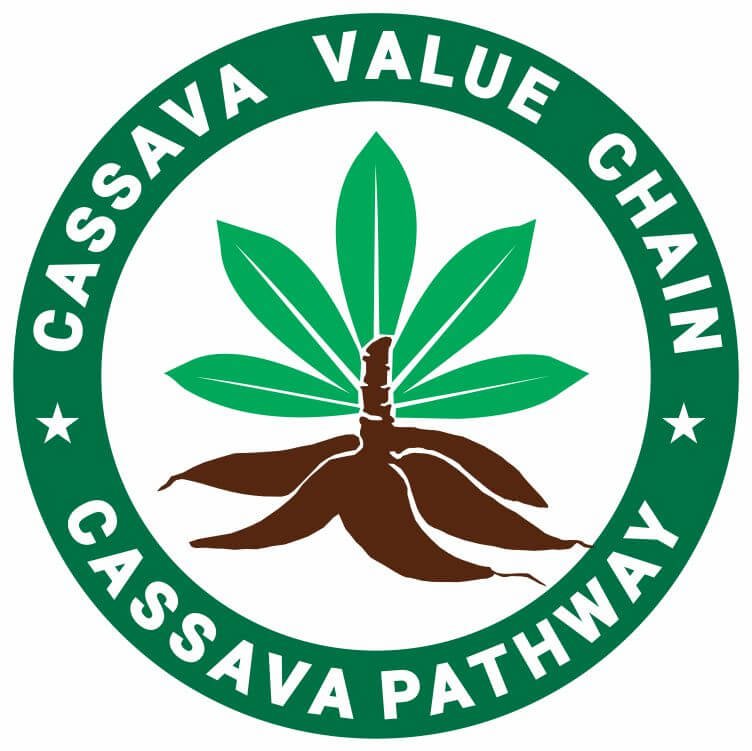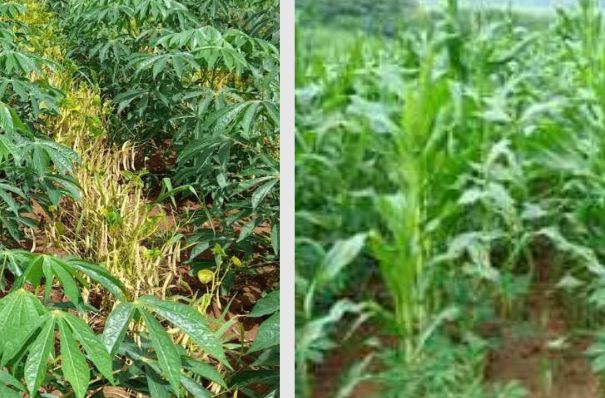Planting other crops alongside the cassava plant can boost soil health, improve yields, and reduce pest problems. Intercropping is a great way to make the most of your land, and cassava is no exception.
In this post, we’ll explore which crops work best with cassava, making it easier to grow and more profitable.
You might be new to cassava farming, or looking to improve your methods, these tips will help you get the most out of your cassava crop.
Table of Contents
Crops that Can Be Intercropped with Cassava
1. Maize: A Productive Partner for Cassava
Maize is a popular choice for intercropping with cassava, offering numerous benefits that improve productivity and profitability.
By combining these two crops, farmers can make the most of their land while ensuring a steady source of income.
One of the key advantages of intercropping maize is the early income it provides.
Since maize matures much faster than cassava, farmers can generate revenue well before their cassava is ready for harvest.
This staggered income stream helps bridge financial gaps during cassava’s longer growing cycle.
Additionally, maize and cassava utilize different soil layers. While maize draws nutrients from the upper soil, cassava’s deep roots tap into lower levels, minimizing competition and ensuring both crops thrive.
This pairing promotes better pest and disease control by creating a diverse growing environment.
Farmers should carefully plan planting distances and monitor crop growth to achieve optimal results and prevent competition for light and nutrients.
Related: How to Harvest Cassava
2. Beans: Enriching the Soil and Your Yield
Intercropping beans with cassava is a smart move for farmers seeking to improve soil health and land productivity.
Beans, particularly bush varieties or shorter climbing beans, are a natural complement to cassava.
Beans enhance soil fertility through nitrogen fixation, a process that enriches the soil without the need for synthetic fertilizers.
This creates a fertile environment for cassava, leading to healthier growth and better yields.
Moreover, beans mature quickly, offering an early harvest that provides food or income well before the cassava is ready.
With proper planning, beans can grow alongside cassava without competing for resources like sunlight or space.
This pairing not only boosts productivity but also aligns with sustainable farming practices by reducing reliance on chemical fertilizers.
Related: What are the Intra and Inter-row Spacing for Cassava?
3. Dwarf Pigeon Pea: A Resilient Ally
Dwarf pigeon pea is a hardy legume that pairs exceptionally well with cassava. It offers several benefits, including weed control and soil fertility improvement.
The dense ground cover provided by pigeon peas suppresses weed growth by blocking sunlight, reducing the need for herbicides.
At the same time, its nitrogen-fixing ability enriches the soil, creating a nutrient-rich environment for cassava.
The roots of the pigeon pea also improve soil structure, enhancing water retention and reducing compaction, which benefits cassava’s deep-rooted system.
By intercropping with dwarf pigeon peas, farmers can improve both yield and sustainability, making it an invaluable addition to cassava farming.
Recommended: Soil Requirments for Optimum Yield of Cassava
4. Sweet Potatoes: Maximizing Land Efficiency
Pairing sweet potatoes with cassava is an excellent way to optimize land use and ensure sustainable farming.
Sweet potato vines grow aboveground, while cassava’s roots extend deep into the soil, reducing competition for resources.
Sweet potatoes mature in just a few months, providing a quick return on investment.
Their sprawling vines also protect the soil from erosion and help retain moisture, creating favorable conditions for cassava.
This combination ensures efficient resource use and higher overall farm productivity.
Related: How to Preserve Cassava Stems
5. Cowpeas: A Versatile Choice
Cowpeas are another fantastic crop to intercrop with cassava. Known for their ability to fix atmospheric nitrogen, cowpeas naturally enrich the soil, reducing the need for chemical fertilizers.
Cowpeas mature faster than cassava, giving farmers an additional income source early in the season.
Their versatility in the market whether sold fresh or dried further adds their appeal.
By carefully planning planting distances, farmers can ensure that cowpeas and cassava grow harmoniously, improving productivity and profitability.
Related: How to Cut Cassava Stems for Planting
6. Groundnuts: A Dual-Purpose Companion
Groundnuts, or peanuts, are a practical choice for intercropping with cassava, offering both economic and environmental advantages.
As a legume, groundnuts fix nitrogen in the soil, boosting fertility and supporting cassava growth.
Their shorter growth cycle means farmers can harvest them earlier, providing an additional revenue stream.
Groundnuts also have high market demand, making them a reliable source of income.
By intercropping groundnuts with cassava, farmers can reduce their reliance on synthetic fertilizers and diversify their income, ensuring long-term sustainability.
Overcoming Intercropping Challenges
While intercropping cassava with other crops has numerous benefits, it’s not without challenges.
Competition for resources like sunlight, nutrients, and water can impact yields.
To address this, farmers should select crops with complementary resource needs and plan planting schedules carefully.
Managing multiple crops also requires more labor, which can strain resources.
Strategic scheduling and the use of labor-saving tools can help mitigate this issue.
Finally, intercropping can attract a wider range of pests, making integrated pest management crucial for maintaining balance.
Conclusion
Intercropping cassava with complementary crops such as maize, beans, or groundnuts is a sustainable way to maximize land use, improve soil health, and increase productivity.
These combinations provide financial stability through staggered harvests and early income while promoting eco-friendly farming practices.
Although challenges like resource competition and pest complexities exist, they can be managed through strategic planning and sustainable practices.
By adopting these methods, farmers can unlock the full potential of intercropping, ensuring profitability and long-term environmental health.
References:
- https://bmcbiotechnol.biomedcentral.com/articles/10.1186/s12896-020-00606-1
- https://www.ajol.info/index.php/afsjg/article/view/37511/25893

Chimeremeze Emeh is a writer and researcher passionate about Africa’s most transformative root crop—cassava. Through his work at cassavavaluechain.com, he explores the entire cassava industry, from cultivation and processing to its diverse applications in food, health, and industrial use.
He also writes for palmoilpalm.com, where he shares his extensive experience and deep-rooted knowledge of palm oil, covering red palm oil, palm kernel oil, and refined products. His work there reflects his lifelong connection to agriculture and his commitment to promoting sustainable value chains in Africa.
Driven by curiosity and purpose, Chimeremeze aims to shed light on how cassava continues to empower communities, strengthen food systems, and link traditional farming wisdom with modern innovation.

